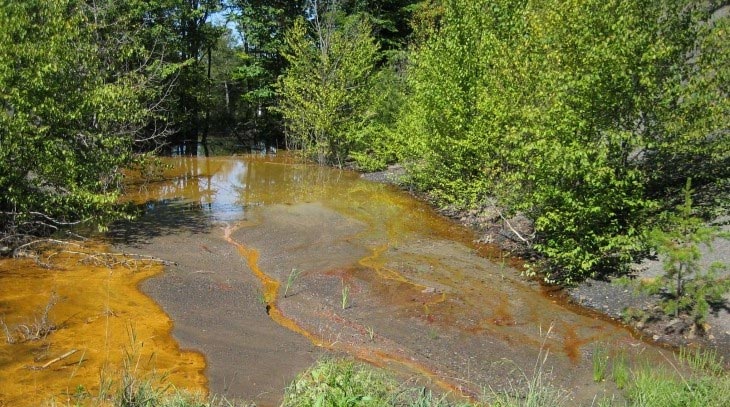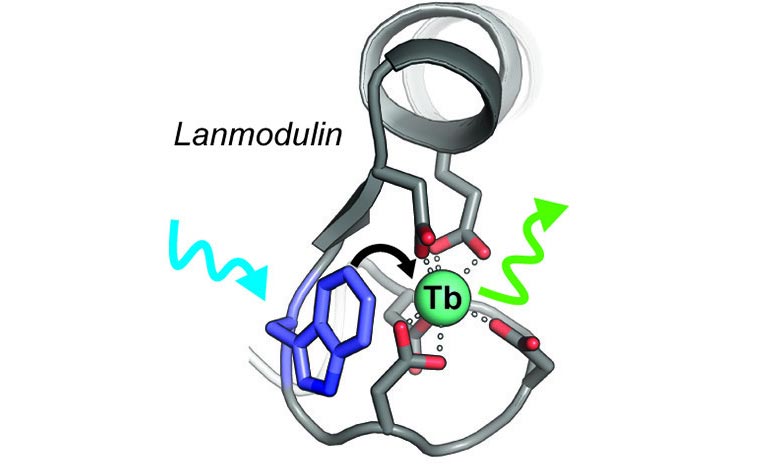
 New Sensor Can Detect Valuable Rare Earth Element in Waste SourcesA new sensor could allow researchers to detect the rare earth element terbium from complex environmental samples, such as acid mine drainage — pictured here polluting a Pennsylvania stream. Credit: Rachel A. Brennan, Penn State
New Sensor Can Detect Valuable Rare Earth Element in Waste SourcesA new sensor could allow researchers to detect the rare earth element terbium from complex environmental samples, such as acid mine drainage — pictured here polluting a Pennsylvania stream. Credit: Rachel A. Brennan, Penn StateLow concentrations of terbium could be identified from acid mine drainage and other waste sources.
A new luminescent sensor can detect terbium, a valuable rare earth element, from complex environmental samples like acid mine waste. The sensor, developed by researchers at Penn State, takes advantage of a protein that very specifically binds to rare earth elements and could be harnessed to help develop a domestic supply of these metals, which are used in technologies such as smart phones, electric car batteries, and energy efficient lighting. A paper describing the sensor was published in the Journal of the American Chemical Society.
Terbium, one of the rarest of the rare earth elements, produces the green color in cell phone displays and is also used in high-efficiency lighting and solid-state devices. However, there are a variety of chemical, environmental and political challenges to obtaining terbium and other rare earth elements from the environment. Developing new sources of these metals also requires robust detection methods, which poses another challenge. For example, the gold standard method of detecting rare earth elements in a sample — a type of mass spectrometry called ICP-MS — is expensive and not portable. Portable methods, however, are not as sensitive and do not perform well in complex environmental samples, where acidic conditions and other metals can interfere with detection.
“There is not currently a domestic supply chain of rare earth elements like terbium, but they are actually quite abundant in nontraditional sources in the U.S., including coal byproducts, acid mine drainage, and electronic waste,” said Joseph Cotruvo Jr., assistant professor and Louis Martarano Career Development Professor of Chemistry at Penn State, a member of the University’s Center for Critical Minerals, and senior author of the study. “In this study, we developed a luminescence-based sensor that can be used to detect and even quantify low concentrations of terbium in complex acidic samples.”
https://www.civilengineering.ai/new-sensor-can-detect-valuable-rare-earth-element-in-waste-sources/

Post a Comment